It was May 8th, 1886, in Atlanta, Georgia, when the Coca-Cola logo came to life. Local pharmacist Dr John Stith Pemberton created the Coca-Cola syrup.
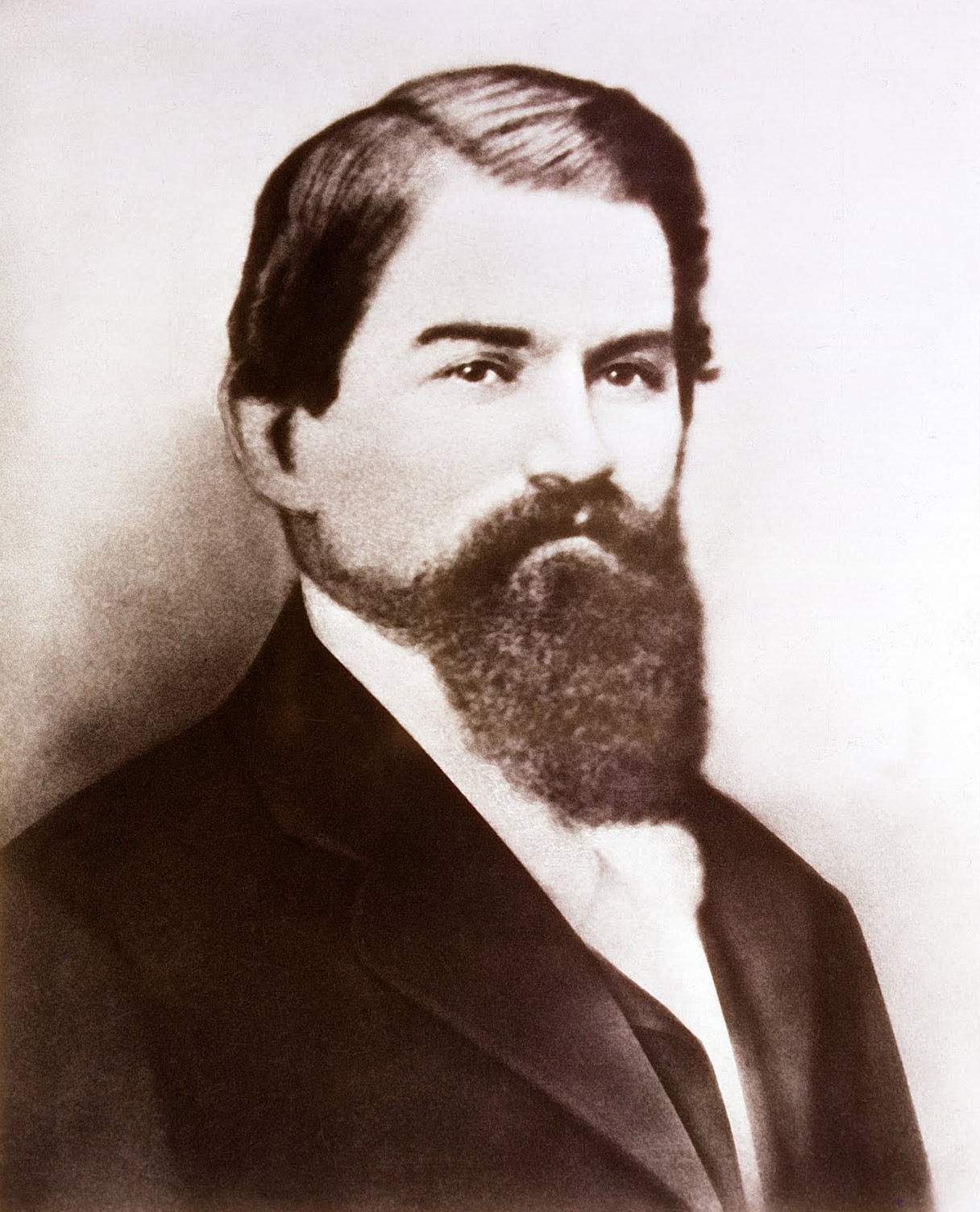
John carried a jug of his syrup down the street to Jacobs’ Pharmacy where it was mixed with carbonated water, deemed tasty, and sold from a soda fountain for five cents a glass.
To understand where the brand name came from we need to go back a little further, to the 1860s when John Pemberton created Coca Wine, an alcoholic drink “for fatigue of mind and body.”

A prohibition law was enacted in Atlanta in 1886, persuading John to rename and rewrite the formula for his popular Coca Wine stimulant, sold at the time by most, if not all, of the city’s pharmacies.
John’s partner and bookkeeper, Frank Mason Robinson, suggested the Coca-Cola name, thinking that “the two Cs would look well in advertising.”
The first known use of the Coca-Cola logo was in an advertisement in the Atlanta Journal on May 29th, 1886. The logo was an all uppercase serif, and the ad invited people to try “the new and popular soda fountain drink, containing the properties of the wonderful Coca plant and the famous Cola nuts.”
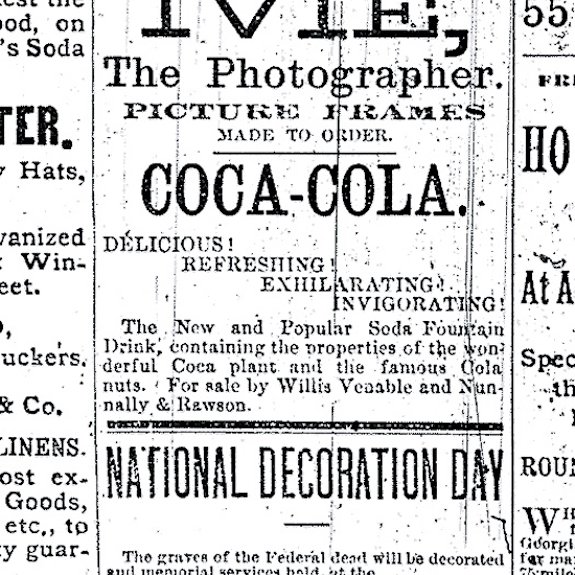
An average of nine drinks per day were sold during the first year.
Frank Robinson wanted the brand name to have a visual style of its own, so experimented with an elaborate Spencerian script, a form of penmanship that was characteristic of the time. There was unanimous consensus on the script logo among those working for the Pemberton company.
Coca-Cola’s is believed to be the first coupon ever offered in the US, first distributed in 1887 (although the “Trade Mark Registered” tag in the tail of the “C” shown above didn’t appear until a few years later).
John never realised the potential of the drink he created, and gradually sold portions of his business to various partners. Just before John’s death in 1888, he sold his remaining interest in Coca-Cola to Atlanta-born Asa G Candler, who proceeded to buy additional rights to gain complete control over the business.

On May 1st, 1889, Asa Candler published a full-page advertisement in The Atlanta Journal, proclaiming his wholesale and retail drug business as “sole proprietors of Coca-Cola… Delicious. Refreshing. Exhilarating. Invigorating.” Sole ownership, which Asa did not actually achieve until 1891, cost a total of $2,300.
An 1891 calendar (below) shows a version of the Coca-Cola logo at the top-right that only existed for a year. The logo at the top-left was for De-Lec-Ta-Lave — a mouthwash also owned by Asa Candler.


In March, 1892, Asa’s merchandising flair resulted in an almost ten-fold sales increase of the soft drink. He soon liquidated his pharmaceutical business and focused his full attention on Coca-Cola. Along with his brother John S Candler, John Pemberton’s former partner (and logo designer) Frank Robinson, and two other associates, Asa formed a Georgia corporation named The Coca-Cola Company. Initial capital was $100,000.
In 1894, in Vicksburg, Mississippi, Joseph A Biedenharn was so impressed by the growing demand for Coca-Cola at his soda fountain that he installed bottling machinery in the rear of his store and began to sell cases of the drink to farms and lumber camps up and down the Mississippi River. He was the first bottler of Coca-Cola.
By 1895 Coca-Cola was drunk in every state.
The first celebrity to be featured in Coca-Cola advertising was model and music hall singer, Hilda Clark (below). She was featured on calendars, serving trays, metal advertising signs, posters, bookmarks, note pads, and various ephemera from the late 1890s to 1904.
A glass of Coca-Cola was available for just 5¢ from 1886 all the way until 1959.
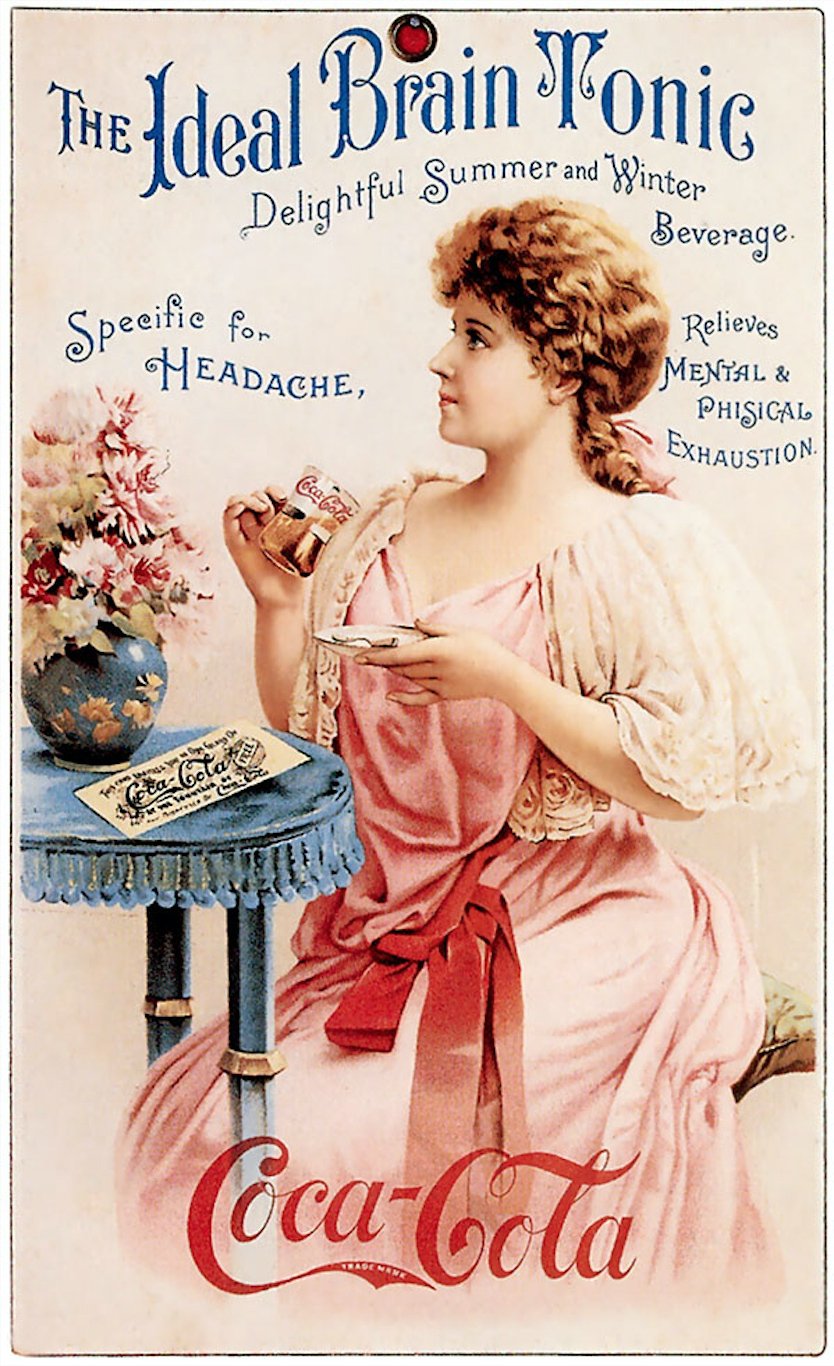
Shown below is the first ever magazine ad for Coca-Cola. The full-page spread featured Lillian Nordica and ran in Good Housekeeping and other leading magazines of the day. A promo coupon for a free drink was attached to the bottom of the ad. Nearly $43,000 worth of coupons were redeemed in 1905 — the equivalent of roughly $1,300,000 in 2021.


“Sometime today you’ll be about all in. Feel as if you’d like to toss up the whole thing and just rest — but you can’t. When that time comes snatch a moment from your work — seek the nearest soda fountain and get a glass of delicious and refreshing Coca-Cola. It will relieve your fatigue, cool you off comfortably, calm your jangled nerves, and quench the thirst.”

Straight-sided containers were used up until 1915, but as soft-drink competition intensified, so did imitation, and in early 1916 the Coca-Cola bottlers approved the unique contour bottle designed by the Root Glass Company of Terre Haute, Indiana.
Nicknamed the “hobbleskirt,” due to the resemblance of the skirt-style in 1910, the historic bottle was derived from the shape of a cocoa bean, elongated with distinct ribs.
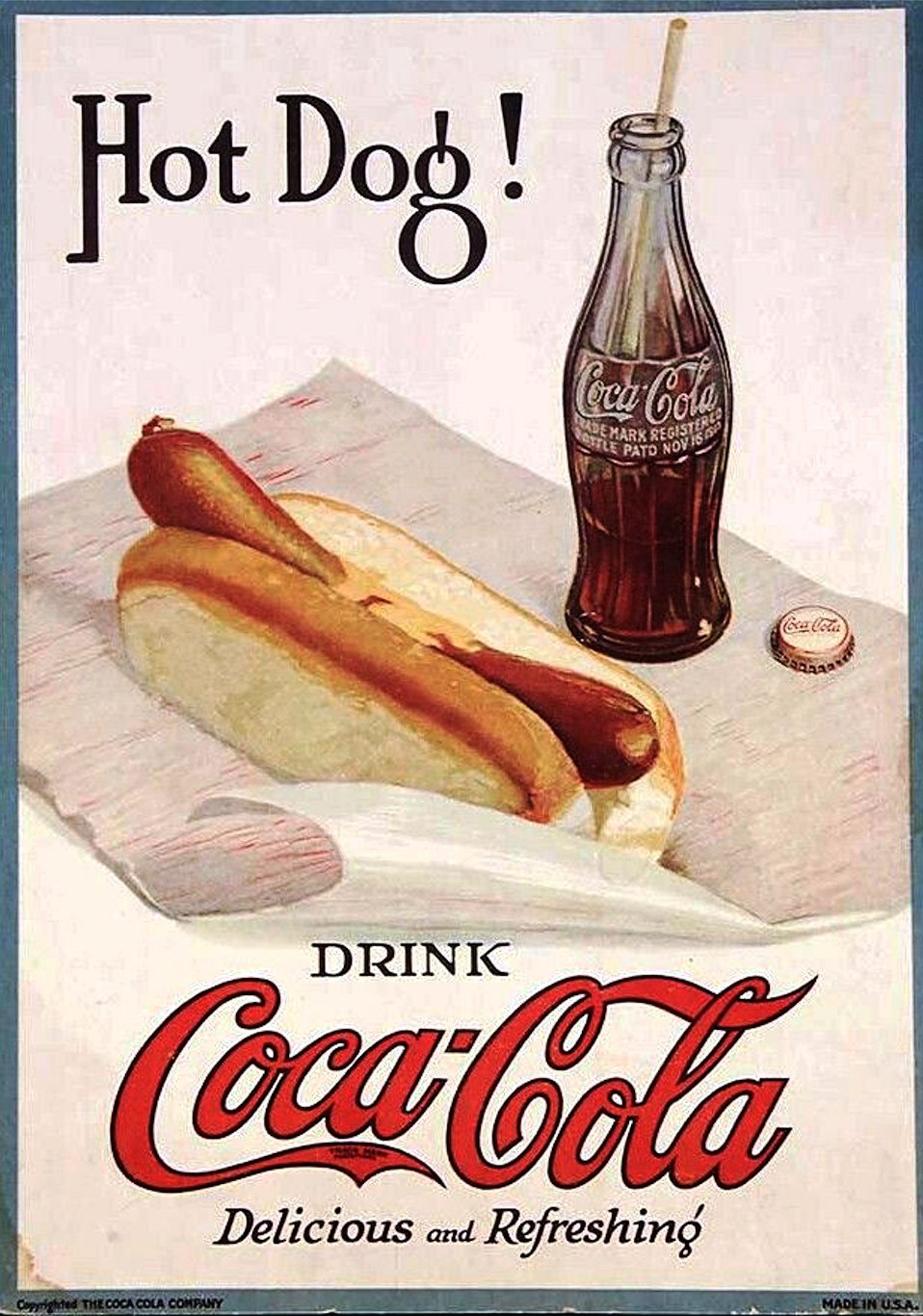
In 1919, the Candler interests sold The Coca-Cola Company to Atlanta banker Ernest Woodruff and an investor group for $25 million. The business was reincorporated as a Delaware corporation, and 500,000 shares of its common stock were sold publicly for $40 per share.

The logo within a red circle began appearing in the early 1930s. It’s been widely used through the decades and in more recent years.
In 1945 “Coke” was registered as a trademark with the USPTO.
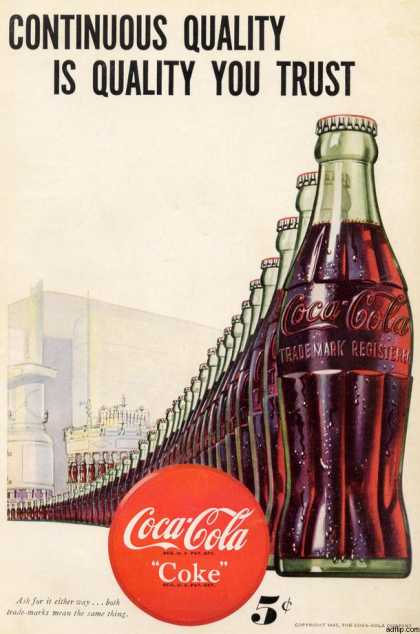
An arched “fishtail” surround could be seen on signage and vending machines for a few years in the late 50s and early 60s, but it was dropped in favour of a return to the earlier red circle.

In 1969 the “Arden Square” logo was unveiled. In a red box, the Coca-Cola script was underlined with a white “wave” or “dynamic ribbon device” that’s still used today.


By 2004 The Coca-Cola Company owned nearly 400 brands in almost every country, with seventy percent of income coming from outside the US. At the time of writing, the company has 2,061 trademark applications, including a trademark for the now-familiar bottle shape — a very rare option for packaging.
Today, Frank Robinson’s elaborate handwritten design is one of the most recognisable logos in the world.
Sources:
- Trace the 130-year evolution of the Coca-Cola logo
- The chronicle of Coca-Cola: birth of a refreshing idea
- The first glass of Coca-Cola is served
- The Coca-Cola logo story
- Vintage Coca-Cola advertising
- Vintage Coke / Coca-Cola advertising
- The evolution of the Coca-Cola logo
- How did the Coca-Cola bottle get its contour shape?
- The Root family and Coca-Cola
You might like Jonathan Mak’s Sharing a Coke visual, or for the background to another popular drink, see the Red Bull origins.
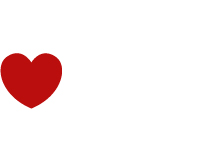

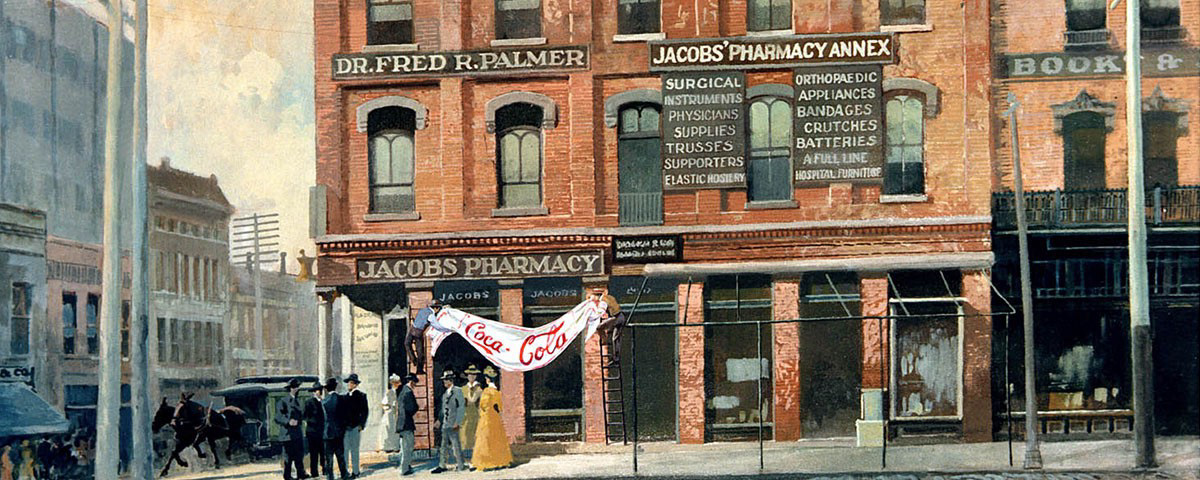




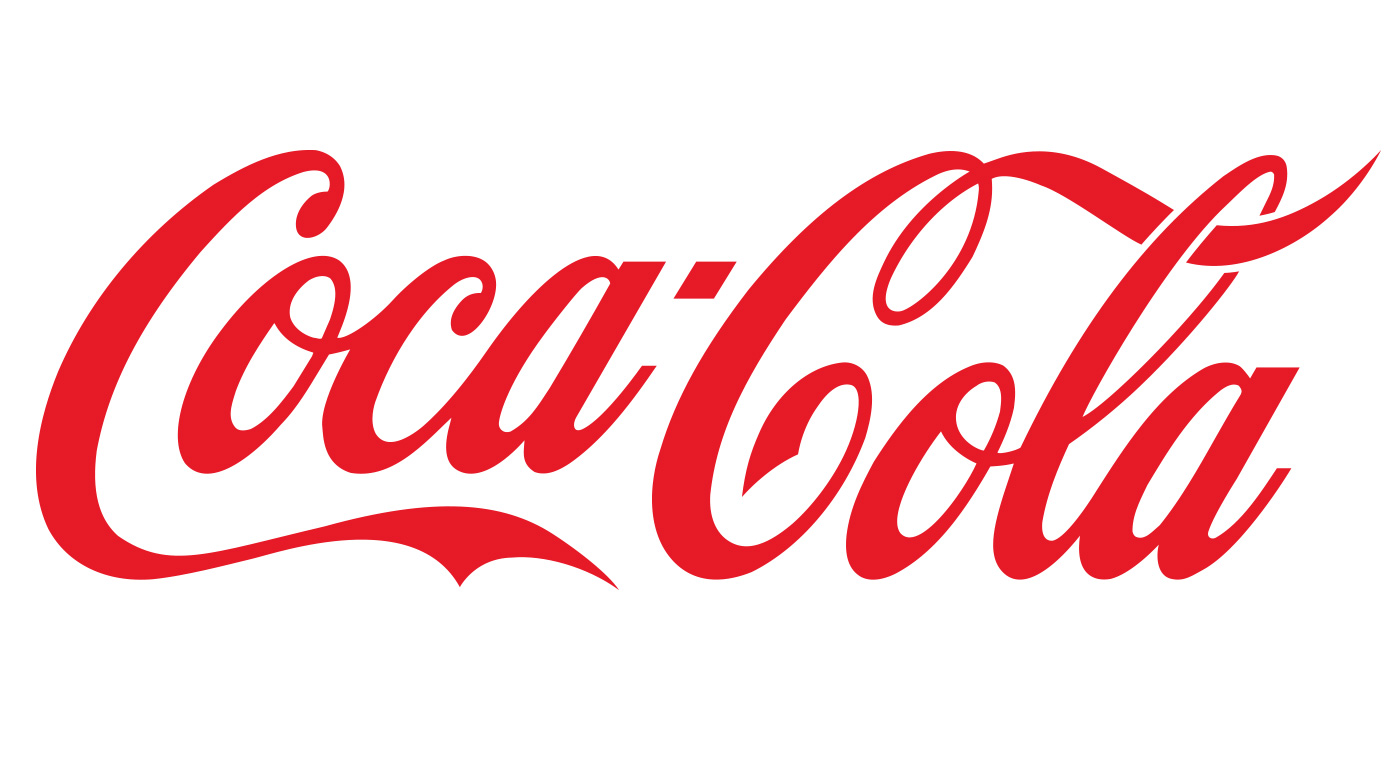



Comments
Wauw, I always thought Coca Cola had never changed the logo, not once. Good logo research you’ve done here David.
Oh, I also wanted to share that I really liked your book Logo Design Love, thanks for that!
Glad you liked it, Ruud. Thanks for reading!
Over the years, I think there has been much confusion and speculation as to who actually designed the dynamic ribbon “Arden square” Coke Wave device.
I was hired by Lippincott and Margulies as a design intern from Syracuse University in the summer of 1965. Ray Stoy was the Coke design account manager at L&M. When he handed me the contemplated logo candidate, I almost lost it because it was so ugly.
I was living with my parents that summer in Scarsdale, NY. That evening, I drew 6 logos of various waves with magic markers on a single sheet of newsprint pad. When I showed it to Ray the following morning he then handed me various logo application sheets – vehicles, vending machines, stationery etc. upon which I applied the logo.
I then returned to Syracuse, graduating with a Bachelor of Industrial Design in 1967, graduated from the Marine Officer course at Quantico and served in Vietnam for one year. Upon returning from Vietnam to my home in the San Francisco Bay Area, I saw a man exiting a store with a six-pack of coke bearing the Coke Wave. Not having the ability to know the fate of the program, I was surprised and delighted to see that it had made it to production.
I am now 77 years old and still living in Marin County, Bay Area, and thought you might be interested in the true story of the origin of the Coke Wave logo.
Sincerely, Philip Torbet (ptorbet@yahoo.com)
I appreciate you sharing your story, Philip. Thank you. I’ve sent you an email.